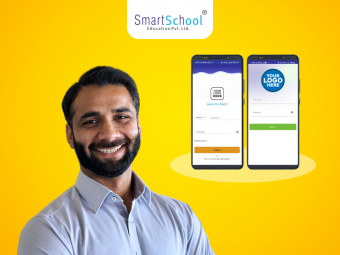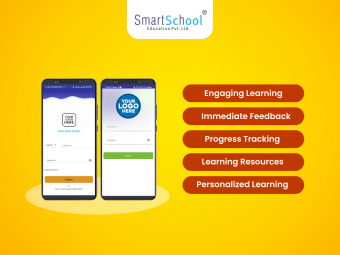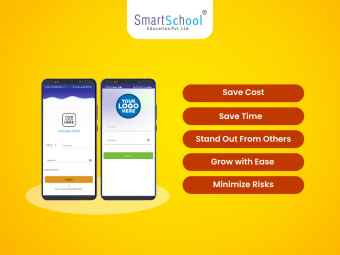If you're looking to create a coaching app for K-12 students, you're in the right place. Building an app tailored to their needs can have a tremendous impact on their learning journey. In this guide, we'll break down the process into simple steps so that you can successfully develop a coaching app that engages and supports K-12 students in their academic endeavors.
Creating a coaching app for K-12 education can revolutionise the way students access educational resources and receive guidance outside of the traditional classroom. Such an app can provide valuable learning materials, interactive features, and personalised coaching to support students' academic growth.
10 Step To Build A Coaching App For K-12 Students
In this blog, we will outline step-by-step process for creating a coaching app specifically tailored to K-12 students.
Step 1: Define the App's Purpose and Objectives:
Clearly define the purpose and objectives of your coaching app. Determine the specific areas of academic focus, such as math, science, or language skills, and the goals you aim to achieve. Consider whether you want to provide tutoring, practice exercises, assessments, or mentorship opportunities.
Step 2: Identify the Target Audience and Market:
Identify your target audience within the K-12 segment. Determine the specific grade levels, subjects, or student demographics you want to cater to. Conduct market research to understand the demand for coaching apps, identify competitors, and gain insights into user preferences and needs.
Step 3: Plan the App Features and Functionality:
Based on the identified objectives and target audience, plan the features and functionality of your coaching app. Consider features such as video lessons, practice quizzes, progress tracking, performance analytics, personalized recommendations, and interactive forums for student-teacher or peer-to-peer communication.
Step 4: Develop the User Interface and User Experience:
Design a user-friendly interface that aligns with the age group and cognitive abilities of K-12 students. Focus on creating intuitive navigation, clear layouts, and engaging visuals to enhance the user experience. Ensure that students can easily access and interact with the app's features.
Step 5: Create or Curate Educational Content:
Develop or curate high-quality educational content that aligns with the curriculum and addresses the specific learning objectives. Include videos, presentations, interactive exercises, and downloadable resources. Ensure the content is engaging, visually appealing, and interactive to foster active learning.
Step 6: Implement Personalization and Progress Tracking:
Incorporate personalization features that adapt to individual student needs. Offer personalized learning paths, customized practice exercises, and tailored recommendations based on performance and learning preferences. Implement progress tracking mechanisms to enable students and their parents to monitor academic growth.
Step 7: Integrate Communication Channels:
Include communication channels within the app to facilitate interaction between students, teachers, and mentors. Enable real-time chat, discussion forums, or video conferencing features to offer personalized support, clarify doubts, and foster collaborative learning.
Step 8: Ensure Data Security and Privacy:
Prioritize data security and privacy measures, especially when dealing with student information. Comply with relevant data protection regulations and implement secure user authentication, data encryption, and strict access controls. Establish robust protocols to protect sensitive data and regularly perform security audits.
Step 9: Test, Iterate, and Gather Feedback:
Thoroughly test the app's functionality, usability, and performance across different devices and platforms. Gather feedback from students, parents, and educators through beta testing or pilot programs. Use the feedback to refine and improve the app's features, content, and overall user experience.
Step 10: Launch and Market the App:
Develop a marketing strategy to promote your coaching app effectively. Utilize various channels such as social media, educational communities, and partnerships with schools or educational institutions. Highlight the app's unique features, benefits, and its ability to support K-12 students in their academic journey.
Why go through the hassle of building a coaching app from scratch when you can easily opt for a white-label solution?
Whitelabeling is the process of rebranding a product or service created by one company and offering it to others under their own brand. A whitelabel education app is an app developed by one company but customized and rebranded by educational institutions to appear as their exclusive solution.
There are several compelling reasons to choose a white-labeling app instead of creating your own coaching app from scratch:
1. Cost and Time Efficiency:
Developing a coaching app from the ground up can be a complex and costly process. It requires a significant investment in development resources, hiring skilled developers, and ongoing maintenance. By opting for a white-labeling app, you can leverage an existing, fully developed solution at a fraction of the cost and time. This allows you to focus on your core business rather than investing resources in app development.
2. Established Technology and Features:
White-labeling apps come with pre-built technology and features that have been thoroughly tested and optimized. These features often include content management systems, user authentication, data security, analytics, and more. By using a white-labeling app, you can benefit from the expertise and experience of the app provider, who has already invested time and effort in developing a robust and functional product.
3. Customizable Branding:
White-labeling apps offer the flexibility to brand the app with your own logo, color scheme, and overall design. This allows you to create a personalised user experience that aligns with your brand identity. While the core functionality remains consistent, you have the freedom to customize the look and feel of the app to create a unique and recognizable presence in the market.
4. Reduced Technical Complexity:
Developing a coaching app requires expertise in various technical areas, such as front-end and back-end development, infrastructure management, and security. By choosing a white-labeling app, you delegate these technical responsibilities to the app provider. They handle ongoing maintenance, updates, and infrastructure management, allowing you to focus on delivering quality educational content and services to your users.
5. Faster Time to Market:
Building a coaching app from scratch can be a lengthy process, involving requirements gathering, development, testing, and deployment. With a white-labeling app, you can significantly reduce the time it takes to launch your product. The app is already developed, and you can quickly customise it with your branding and content. This allows you to enter the market faster, stay ahead of competitors, and start serving your target audience without delay.
6. Ongoing Support and Updates:
Choosing a white-labelling app typically comes with ongoing support and updates from the app provider. They handle technical support, bug fixes, and regular feature updates, ensuring that your app remains up-to-date and functional. This saves you the hassle of maintaining a dedicated development team and ensures a smooth user experience for your students and instructors.
Ultimately, opting for a white-labeling app provides a cost-effective, time-efficient, and feature-rich solution for launching your coaching platform. It allows you to focus on your core educational offerings while leveraging the expertise and established technology of the app provider. By choosing a white-labeling app, you can accelerate your entry into the market, reduce technical complexity, and deliver a high-quality learning experience to your users.
Get Your Own Coaching App In Your Own Brand Name With SmartSchool’s Whitelabel Coaching App Solution
Elevate your educational institute with SmartSchool’s Whitelabel Coaching App Solution that offers an interactive learning app, enriched with digital content from nursery to class 12th. Additionally, empower your educators with a powerful teaching app, both seamlessly branded with your institute's name. Unlock the potential of personalized education under your own unique identity.
Features Of SmartSchool’s Whitelabel Coaching App Solution
- 50k+ HD Videos - Animated and Anchor Based Videos
- 2 Million+ Learning Resources
- Huge Question Bank Of 1,00,000+ Questions
- 3,000+ Publishers Mapped For Personalized Learning
- 10,000+ Interactive Tools For Revision
- CBSE, ICSE and All Major Indian State Boards
- Bilingual Content - Both In Hindi and English
- Real-Time Tracking of Student Performance
- Monitor Progress and Content Usage Report
- Special Learning Zone for Dyslexia Students
- Real Life Videos and Science Experiments
- Easily Switch Between Offline and Online Content Mode
- Diagrams, Mapwork, History Timelines & Toppers Answers
- HOTs, Previous Year Question Papers & Formulae Master
- Change video speed, Search content and bookmark favourite videos
- Live classes, Fee Tracking, Assignments and Attendance
- WhatsApp, App notifications and Email platform
To know more, call 8927089270.
Conclusion:
Developing a coaching app for K-12 education requires careful planning, thorough market research, and attention to the specific needs of students and educators. By following the step-by-step process outlined in this guide, you can create a powerful coaching app that offers personalized support, engaging content, and effective communication channels for K-12 students.




Leave your comment